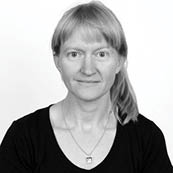 What can happen to cells even after a person has died? Find out on April 4 during a Faculty Lecture Series talk, hosted by the Farquhar College of Arts and Sciences.
What can happen to cells even after a person has died? Find out on April 4 during a Faculty Lecture Series talk, hosted by the Farquhar College of Arts and Sciences.
“Cellular Life Beyond an Individual’s Death”
Faculty Lecture Series | Emily Schmitt, Ph.D., associate professor and coordinator of biological science
Thursday, Apr. 4
Noon–1:00 p.m.
Alvin Sherman Library | Second Floor Gallery
About the Talk
This talk will discuss what happens to cells once they leave our bodies, especially when we have samples taken as part of medical procedures.
One of the most famous examples of cell lines surviving long after a person has died comes from a tumor found in the body of Henrietta Lacks, who died of cervical cancer in 1950. The study of approximately 50 million tons of her cells—about the amount of cells in one-billion people—has resulted in nearly 11,000 patents, including the polio vaccine. These cells have become a focus of public attention since Rebecca Skloot’s 2010 book, The Immortal Life of Henrietta Lacks.
This talk is free, and all are welcome to attend. Light refreshments will be served.
About the Series
The Faculty Lecture Series draws from the knowledge and expertise of more than 120 full-time faculty members within the Farquhar College of Arts and Sciences. The series explores the faculty’s diverse areas of interest in the arts, humanities, social sciences, physical sciences, and biological sciences. For more information, contact James Doan, Ph.D., professor at the college, at (954) 262-8207.

